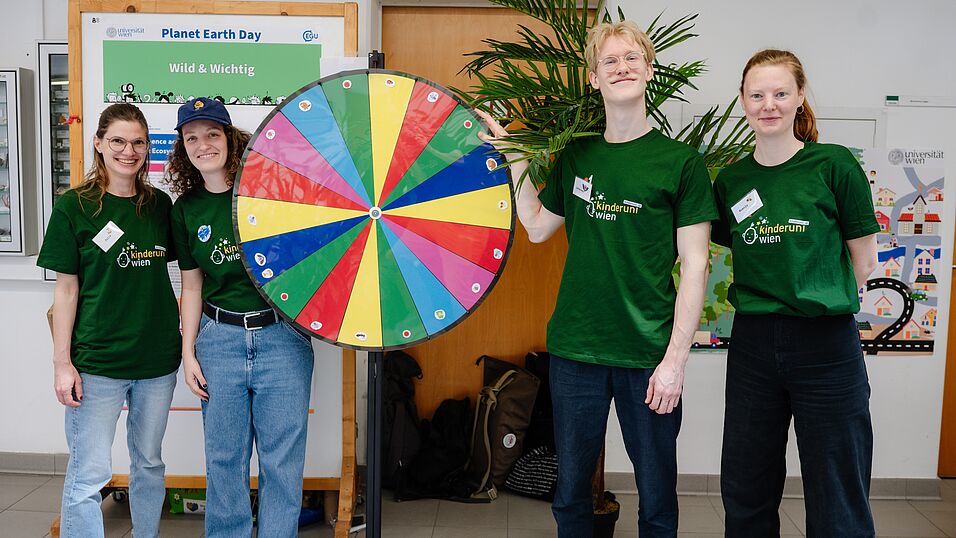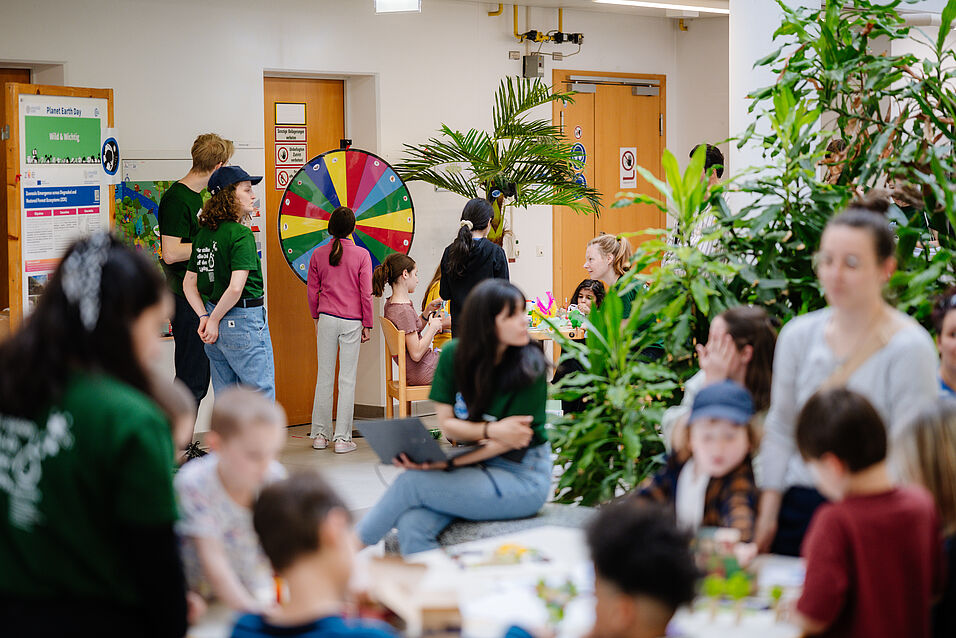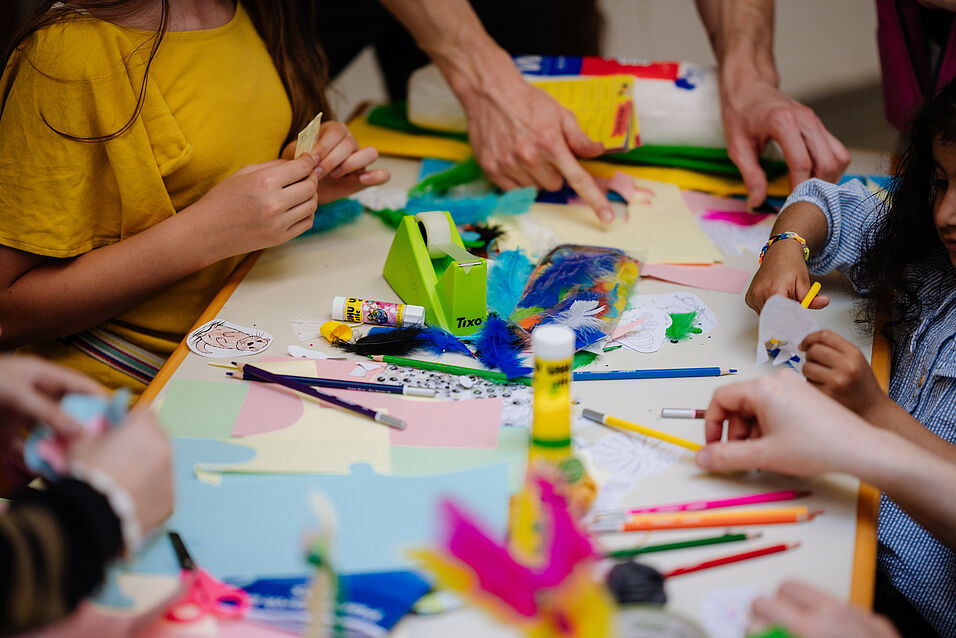The goal of the stand was to explain the link between intact ecosystems and the health of humans and animals to children aged 7–12. Using a large hidden-object picture, children first discovered how humans negatively impact nature—for example, through deforestation, urbanization, and environmental pollution. Afterwards, they had the opportunity to spin a wheel of fortune and receive an information card about parts of the ecosystem and diseases that can be transmitted between animals and humans, known as zoonoses. In this way, they learned not only about the roles of wildlife like ants, foxes, and wild bees in the ecosystem but also about the dangers posed by ticks and mosquitoes.
An important part of the booth was explaining to children how to protect themselves against various pathogens. To playfully contribute to a healthy ecosystem, the children crafted plants and animals using colorful materials. As a result, the hidden-object poster became more vibrant throughout the afternoon, and the ecosystem grew healthier as the children eagerly added trees, insects, and mammals.
Further information can be found on the website of the Faculty of Earth Sciences, Geography and Astronomy.
Photos: Walter Skokanitsch



